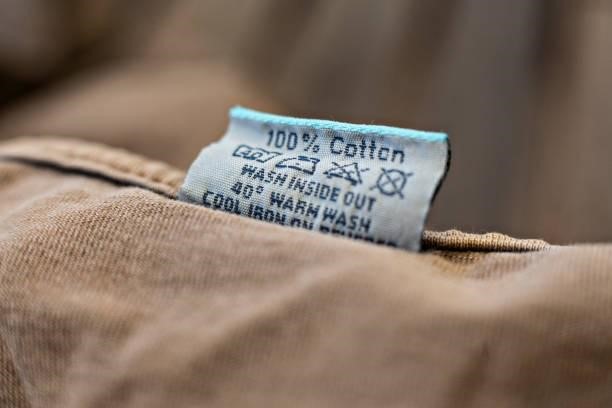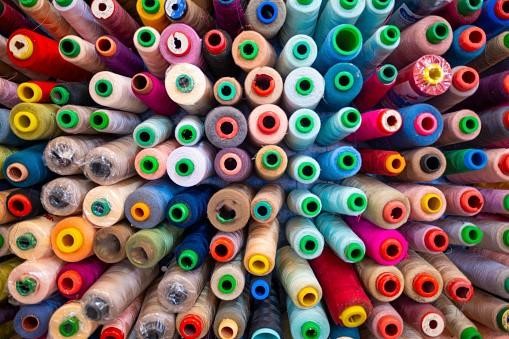
Subscribe To Emails
Subscribe to the YourCotton mailing list to receive updates on new arrivals and promotions (about once every 6 weeks)!

When picking out textiles, two popular choices are wool and cotton. Both of these fabrics offer some advantages and disadvantages when it comes to comfort, durability, and cost. To determine which fabric is best for certain garments or projects, you need to learn more about the properties associated with each material.
In this article, we’re going to look at the differences of wool vs cotton so that you can make an informed decision when selecting your next textile or craft project.
Cotton is one of the best fabrics to wear and use for a wide range of uses because cotton is incredibly durable and breathable. It's made from cotton fibers woven together in yarns that are then turned into cotton fabric before being woven into sheets. You’ll find cotton in shirts, pants, dresses, skirts, jackets, and more - plus, it can even be used as a lining or embroidery material.
Cotton socks are extremely comfortable because they allow your feet to breathe while tucked away in shoes all day. Compared to synthetic fabrics, cotton wears better over time and doesn't retain odors quite as much. Choose cotton for the maximum comfort and durability for any clothing article you purchase!

Wool is a natural fiber made up of proteins and compounds from merino sheep. These animals have a coat of hair their owners shear to produce fibers that are spun into wool yarns and fabrics. The merino sheep produce exceptionally soft wool, called merino wool, which has become highly sought after for various garments, including socks, jumpers, and winter coats.
Wool fabric has been used for centuries due to its strength, warmth, and elasticity. In addition to providing both insulation and comfort, other advantages of wearing merino wool garments include its breathability, wrinkle resistance, and odor-resisting properties. Wool is an environmentally friendly option as it is a renewable material with many benefits to offer users in different climates.
Wool fabrics can keep wearers cooler in warm weather due to wool fibers’ unique ability to regulate temperature. The wool fibers trap and expel moisture, allowing air to circulate freely throughout the fabric. While both wool and cotton make breathable fabrics, wool feels far more breathable when wearing them in warmer weather because of its superior moisture-wicking properties. Wool socks won't feel as wet and heavy compared to wet cotton socks, making wool a far better choice for those hot summer days!
Cotton and wool are durable fibers, often used to make clothing and other fabrics. Pima cotton is a popular choice for wearing, as it is light but durable and usually quite soft. Cotton sweaters can also be resilient if their owners take proper care of them. On the other hand, wool does tend to outlast cotton when handled properly.
Alpaca wool is a particularly strong type of fabric that can hold up well when making clothing items that receive more wear than others. Wool is typically more fire-resistant than cotton, so wearing clothing made of wool could provide an extra layer of protection against accidents or natural disasters. Furthermore, wool fibers can take more pressure or repetitive movement before they break than cotton fibers, making them a better option for wearing and laundering over long periods.
Cotton is a fabric that’s known to be soft on the skin. This natural softness is due to its fiber, cellulose, which is inherently smoother than the scales of animal hair found in wool clothing.
The protein structure of wool fibers has tiny overlapping scales that can make wearing them uncomfortable and rough on your skin. Manufacturers can use treatments to soften wool fabrics, but naturally wearing cotton gives you a smoother feel without any additional treatments. What’s more, wearing and washing cotton clothes further helps them become softer over time!
Wearing wool is the way to go when the cold weather rolls in. It’s thicker than cotton and holds heat better thanks to tiny spaces within its fibers that capture and keep body heat. We may think wearing a cotton sweater will keep us warm in colder temperatures, but cotton's ability to absorb water quickly can render its insulation useless due to moisture saturation.
Wool is far superior at protecting against the chill as it resists water absorption much better. So if you’re looking for extra warmth, switch out your cotton clothing for wool-knit sweaters, and be sure to stay cozy all season long!
While both cotton and wool offer comfort and style options, the weights of these materials differ greatly. Cotton fibers are thinner than most wool fibers, so manufacturers cannot thin the fiber beyond its original size. Yet it can be easy for them to spin and treat the wool fibers to make thicker sweaters and clothing.
Additionally, due to its properties of better-trapping warmth, wearing wool offers more comfort when wearing thicker clothing or during cold weather. In comparison, wearing cotton is light-duty enough for a sweater or shirt but probably would not provide enough insulation if you're looking for something to keep warm outdoors in colder climates.
Wearing cotton to keep cool in a sweat-inducing situation can lead to feeling more uncomfortable than wearing something else. Cotton holds in your body heat, so wearing a cotton sweater for a hot day is not the smartest choice. Instead, wearing clothing made from fabrics like wool that wicks away moisture is more effective at keeping you dry and comfortable.
Moisture-wicking materials are specially designed to absorb sweat and pull it through fibers toward the fabric's surface to evaporate. As the moisture moves through the same spaces in the fiber that help insulate and keep your body heat, wearing wool clothing instead of cotton will have less water needing to evaporate in the first place. Make sure to opt for garments with moisture-wicking properties on days when you know you will be warm and want something breathable.

Cotton and wool are truly remarkable fibers. For centuries, textile companies have been relying on these two natural sources to produce clothing, curtains, and much more. Both materials have a considerable lifespan for longevity, and one has no shortage of options with their versatility. That said, the climates where each material flourishes can be easily distinguished; cotton does best in warmer temperatures, whereas wool performs better in cooler conditions. By taking into account one's environment before opting for either of these natural fibers, one can ensure success in whatever project one pursues.
If your next project requires the versatility and comfort of cotton, look no further than YourCotton’s wide selection of different patterns, colors, and designs.